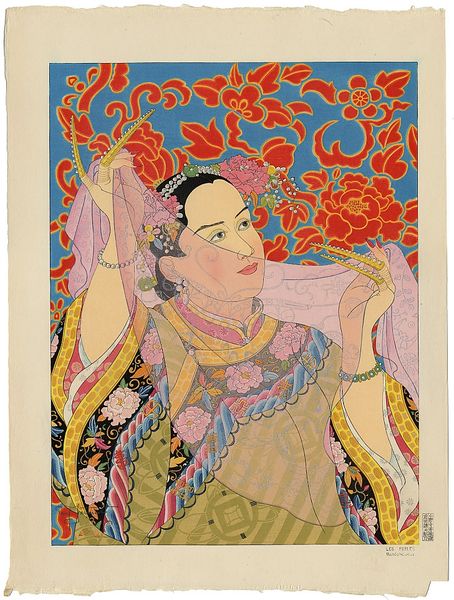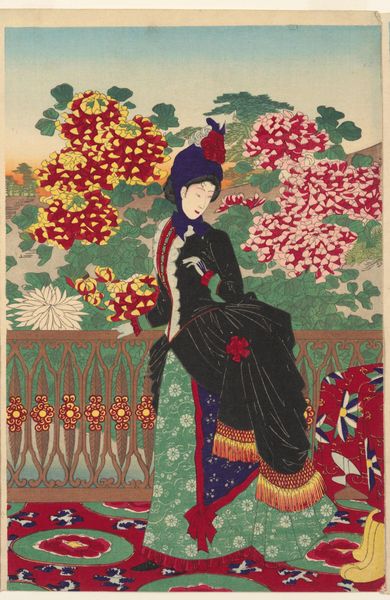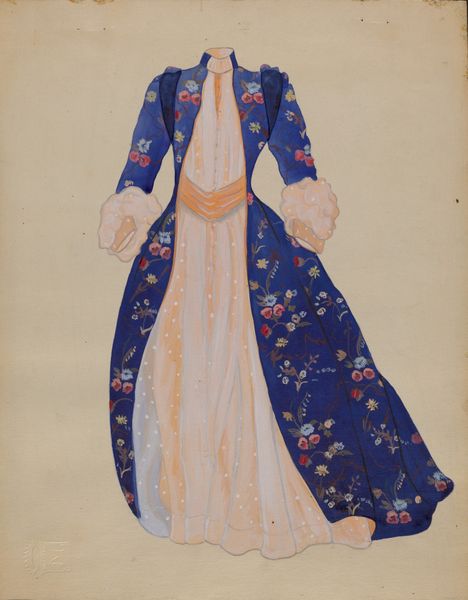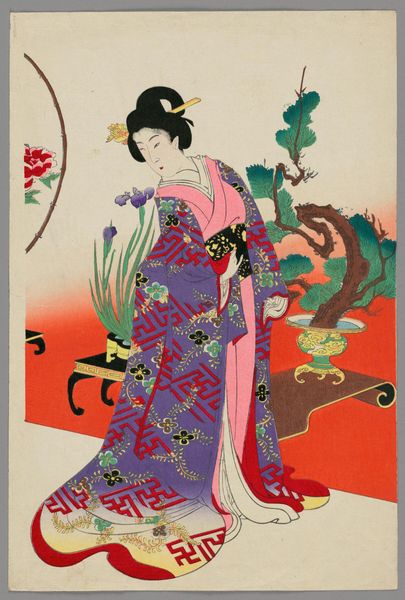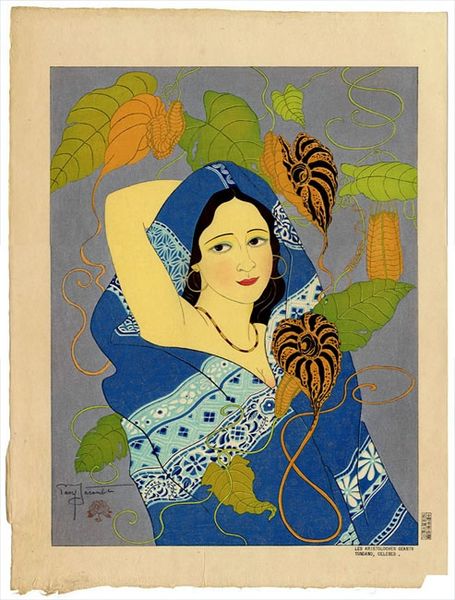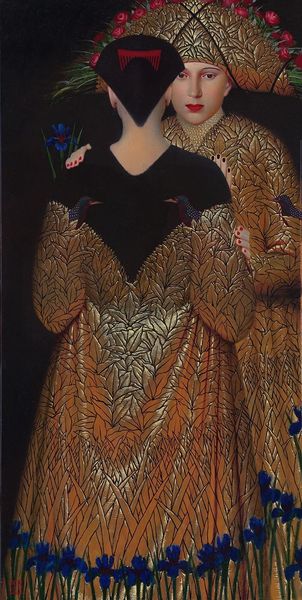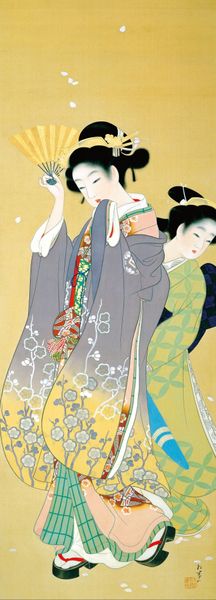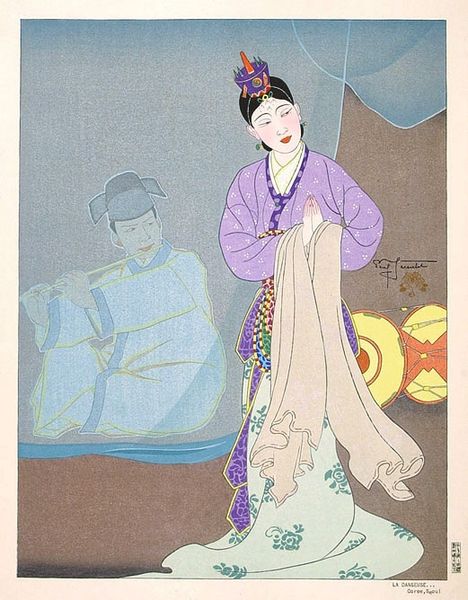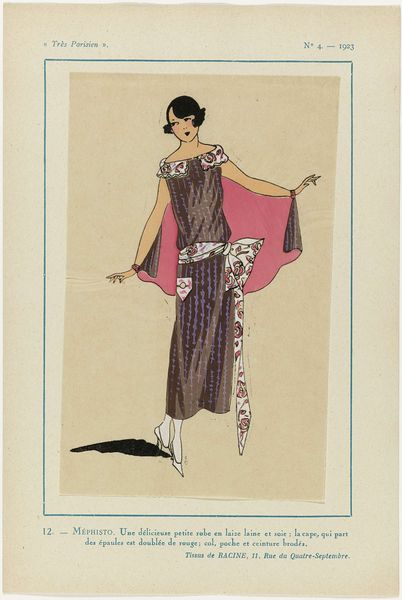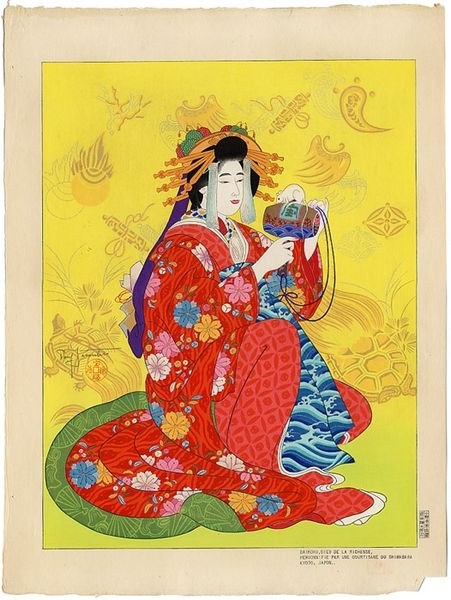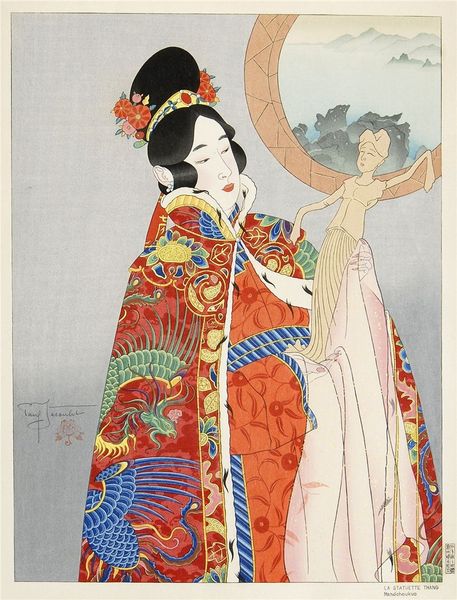
tempera, painting
#
portrait
#
tempera
#
painting
#
landscape
#
islamic-art
#
miniature
Copyright: Hossein Behzad,Fair Use
Curator: This untitled painting by Hossein Behzad, created in 1960 using tempera, strikes me with its intricate detail and vibrant colour palette. I’m especially drawn to how the figure seems to emerge from the floral background. What catches your eye? Editor: It’s interesting you say that! I immediately noticed how flat everything seems. The woman doesn't seem to interact with the floral plane she's standing on at all. Do you think there's something symbolic about that disconnect? Curator: Absolutely! In Persian miniature painting, the flatness isn’t a flaw, but a deliberate choice, filled with meaning. What emotions or concepts do these traditional motifs, like the cypress tree, convey to you? Editor: Well, I know the cypress tree, or سرو (sarv), is associated with steadfastness, resilience and grief in Persian literature. Does its presence here suggest something about the woman's character or experience? Curator: Precisely! These symbols create layers of meaning beyond the surface representation. Think of the dragons on her skirt: these symbols can invoke power, guardianship, or even chaos. Editor: So, each element functions like a word in a visual language. Are we meant to "read" the image to uncover a deeper narrative? Curator: In many ways, yes. We’re accessing a cultural memory encoded within these forms. And the poems at the top – don't forget that miniature often comes paired with literature! Do you see any motifs that make you curious? Editor: I’m intrigued by the architectural shapes sketched into the sky! Is it important for interpreting the main subject of the miniature? Curator: A subtle reference indeed. Consider this: is the city a symbol of paradise, and could this be related to this beautiful woman in a garden? Or, instead, a long lost homeland? Editor: That’s amazing. I initially saw it as just a pretty picture, but understanding the symbolism really opens up a whole world of interpretation. Thanks so much. Curator: My pleasure. By learning to decode these symbols, we can unlock deeper connections to the past and gain new insights into the human experience.
Comments
No comments
Be the first to comment and join the conversation on the ultimate creative platform.
